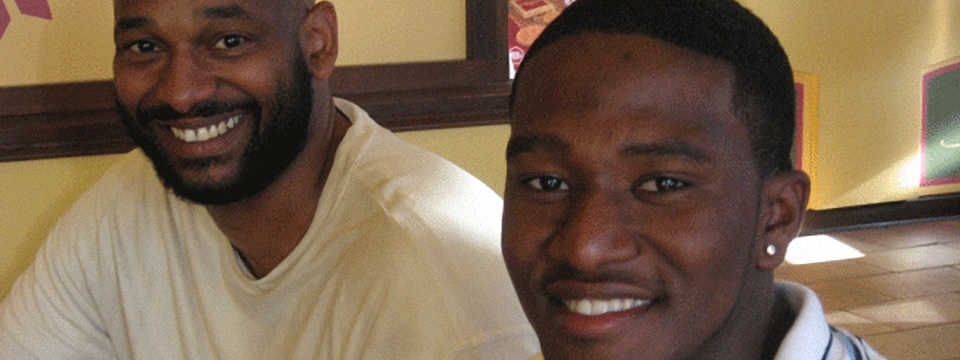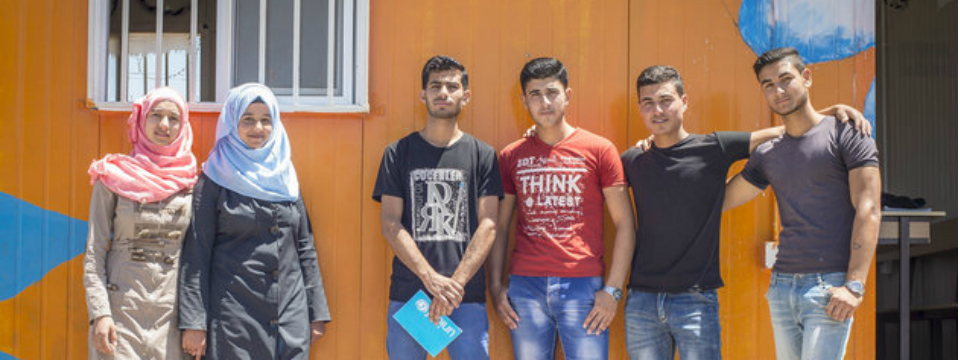Promising pilot test of the Healthy “Little” Lives Big Sisters Mentors Project
 MICHELLE R. KAUFMAN, PhD
MICHELLE R. KAUFMAN, PhD
Johns Hopkins University, Baltimore, MD, USA
Kaufman, Michelle R.(2010) ‘Testing of the Healthy “Little” Lives Project: A Training Program for Big
Sister Mentors’, American Journal of Sexuality Education, 5: 4, 305 — 327
American Journal of Sexuality Education
Abstract: Big Brothers/Big Sisters (BBBS) is a national program aimed at providing mentors for disadvantaged children. This study tested whether Big Sister mentors could be trained to increase communication with their Little Sisters about sexual health issues. The study tested an intervention based on social cognitive theory in which a sexual health communication program was tested against an attention-matched control condition (bullying/peer pressure). Results showed level of self-efficacy for talking about sex increased within subjects, regardless of study condition. Big Sisters in the experimental group spent more time talking with their Little Sisters about romantic relationships as compared to those in the control at follow-up.
Big Brother and Big Sister mentors are often in the position to guide a child through learning life lessons and practicing safer behaviors. Many of the children who participate in BBBS are from inner cities and poorer neighborhoods. Consequently, many lack socially protective resources and are at higher risk for teen pregnancy and sexually transmitted infection (STI) or HIV risk. Mentors could play a major role in helping these adolescents to avoid risky sexual health behavior and develop a healthy, positive, and agentic (one in which she is able to make her own choices) approach to sexuality. Unfortunately, initiating conversations about sexual health and sexuality with a child are often difficult for any adult. A mentor who is positioned to be a primary sex educator in a child’s life may therefore benefit from a sexual health communication skills-building intervention focused on increasing social cognitive factors such as self-efficacy and outcome expectancies for discussing sexual topics.
Background
STI/HIV interventions aimed at families of adolescents
Several studies on STI/HIV prevention among adolescents have focused on communication about sexual issues between adolescents and their families and how parents have been shown to influence adolescent sexual risk behavior (Stanton et al., 2002). For children in single-parent homes or those with unstable family lives, however, the expectation is low that a significant amount of time spent by the parent and child together would be focused on sexual health issues. Low income single parents and unstable families are much more focused on immediate needs such as financial security, food, health care, and so forth. Therefore, it is possible that someone outside of the child’s family (such as a nonrelative adult mentor) could have a significant influence on the child’s life. Thus, mentors of adolescents were the targeted population for the current research.
Social Cognitive Theory as a Tool For Intervening With Mentors
The intervention design for the current study is based primarily on Ban-dura’s social cognitive theory (SCT; 1997). Within social cognitive theory, behavior is conceived as the interaction of personal factors, contextual or environmental factors, and the behavior itself. According to Bandura, self-efficacy, outcome expectations, and personal goals related to a given behavior are the most salient factors influencing behavior. Social cognitive theory has proven successful when used as the basis for sexual risk interventions, particularly among adolescents (Kirby et al., 1994). Social cognitive theory as the basis of the intervention was one of three factors associated with any change in AIDS-related knowledge, attitudes (toward HIV risk, protective practices), intentions (abstinence and condom use), and behaviors (abstinence, condom use, and number of sexual partners; Kim, Stanton, Li, Dickersin, & Galbraith, 1997).
Methods
Elicitation Work – A focus group was conducted with staff of BBBS to determine the content of the intervention groups.
Participants and Procedure – A total of 66 Big Sisters (BBBS in NewEngland) were recruited to participate in the study, “Healthy ‘Little’ Lives”. Eligible participants must have been matched with a Little Sister for a minimum of three months, and the Little must have been at least 10 years old. All study materials and study protocol were approved by the University of Connecticut IRB prior to collection of any data or contact with any potential participants and the files of each Big were check to see that the parents/guardians did not specify sexual topics as a conversation that should not be pursed by the Big when spending time with the Little. At the point of telephone contact, all participants who agreed to enroll were randomized into a condition by the researcher, then each Big was scheduled to attend a training workshop.
Measures
Baseline surveys captured demographic characteristics. Self-efficacy and outcome expectancy were adapted from Deilorio et al.’s (2001) scales used to evaluate parenting self-efficacy and outcome expectancy related to discussions about sex.
Enactment of sex-based communication
At baseline only, Bigs were asked in general how often they talk to their Littles about sexual health topics (e.g., having sex, getting pregnant, STIs/HIV, changes due to puberty, romantic relationships with boys). Bigs were also asked to indicate whether or not they have talked with their Littles about the same sexual health topics during the past two weeks. If so, they were asked to indicate how many times the topic was discussed and for how long.
Intervention Conditions
Sexual Health Issues (Experimental) – The experimental group participated in a one-session program approximately three hours long designed to increase the self-efficacy of Bigs in talking with their Littles about issues related to sexual health. Bigs were encouraged to talk to their Littles about the positive aspects of sexuality, such as being comfortable with oneself and seeing sex as a positive experience between two people when it is consensual and safe. Participants were brought into a group room in a local BBBS office and the content of the intervention was delivered using various formats, including discussions, videos, and role-playing.
Program
The program was divided into two major parts. Part One was focused on information and communication exercises. Part Two was devoted to practicing effective listening and communication skills necessary for a successful mentoring relationship in order to increase the self-efficacy of the Bigs for communicating about sexual health issues.
Bullying/Peer Pressure (Control)
The control condition was a time-matched program, also based on the self-efficacy and outcome expectancy ideas of SCT. The format of this condition was identical to that of the experimental condition, with content focusing on peer relationships.
Follow-Up Procedures
All Bigs were surveyed via phone at 2, 4, and 6 weeks following their completion of the program using a similar survey as given at baseline, with open-ended questions added regarding the number of times they had conversations with their Littles over the past two weeks about the covered topics in the program.
Results
The results obtained in this study are promising in that the self-efficacy in talking about difficult issues increased, as did the discussion of romantic relationships. For adolescents such as Little Sisters who come from difficult family situations, a Big Sister who attends such a training program is more likely to fill the gap left by the child’s family in dealing with difficult issues such as sexual health and bullying, which is in line with previous research on the impact of mentoring programs (DuBois, Holloway, Valentine, & Cooper, 2002; DuBois & Silverthorn, 2005; Reynolds & Repetti, 2006). Qualitative data gathered through items measuring pro-gram satisfaction in the current study showed that Bigs who participated in the Healthy “Little” Lives Project found the information relevant, useful, and important. Quantitative data showed they also felt efficacious in their ability to have such discussions. With revisions to the intervention protocol, it is possible that more significant results specific to sexual health communication would have been obtained. While the current trial of the Healthy “Little” Lives Project did not prove entirely successful in producing significant intervention outcomes, this program does deserve more attention. Another trial might prove more successful if conducted with new Bigs at the beginning of the match process, looking at changes in their levels of self-efficacy, outcome expectancies, and conversation enactments on sexual health issues over the length of their match (typically a minimum of one year).
Discussion
The hypotheses that Big Sisters who participated in the sexual health communication group of the Healthy “Little” Lives Project would increase their self-efficacy and positive outcome expectancies in talking to one’s Little Sister about sexual health issues more than those in the control was not supported. However, when looking at within subject analyses, results showed that there was a change in self-efficacy, over time, but that this was regardless of intervention condition. There was no significant effect over time for increased positive outcome expectancies. These results indicate that the intervention program in general increased participants’ feelings of self-efficacy for talking to their Littles about difficult issues, but not for sexual health or bullying/peer pressure topics in particular.
Limitations and Effectiveness of the Intervention
Clearly, while the intervention did succeed in increasing the self-efficacy for Bigs in discussing difficult topics with their Littles, the goal of increasing sex-based communication was not achieved. This result could be due to a number of issues, including the effectiveness of the intervention, the young age of the Little Sisters, or the time frame of the follow-ups, duration of the intervention and recruitment pool, among other issues.
Future
Finally, the current intervention, including any modifications in protocol, should be tested with Big Brothers2. While the current trial was focused only on Little Sisters because of their additional risk of teen pregnancy as well as STIs and HIV, it is important to pay equal attention to the sexual behavior of adolescent boys, such as Little Brothers participating in BBBS. A future trial of the Healthy “Little” Lives Project should include a similar sexual health intervention session tailored for those with Little Brothers.
Summary
Regardless of the results of the current trial, the Healthy “Little” Lives Project deserves more attention, including refining the protocol and testing the revisions with trials. Building self-efficacy in talking about difficult issues (whether they are sex or bullying) is a positive for Bigs, as shown by the qualitative data, with few hours invested. Perhaps with revision to the proto-col, BBBS could consider this as an element of their orientation training for Bigs. Most importantly, teens remain one of the highest risk groups for con-tracting STIs/HIV, a large number of teenage girls continue to get pregnant, and those in disenfranchised communities such as the Littles participating in BBBS are most at risk. Working with Big Brothers and Sisters could poten-tially serve as a great agent for changing these patterns and thus reducing STI/HIV rates and teen pregnancy in high-risk communities. After all, it is Little Sisters and Brothers who continue to be most at risk for sexual risk behavior and its long-term consequences.









